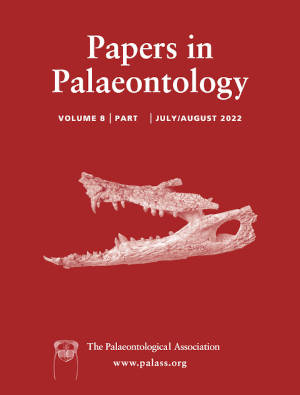Article: First non-amber Mesozoic pseudoscorpion from Upper Triassic deposits of eastern Europe, with a description of two new fossil subfamilies (Arachnida, Pseudoscorpiones, Feaellidae)
Publication: Papers in Palaeontology
Volume:
8
Part:
5
Publication Date:
2022
Article number:
e1466
Author(s):
Vasiliy B. Kolesnikov, Ilya S. Turbanov, Kirill Yu. Eskov, Evgenia A. Propistsova, and Alexey S. Bashkuev
DOI:
10.1002/spp2.1466
Abstract
Abstract Pseudoscorpiones is one of the oldest arachnid orders, known in the palaeontological record since the Middle Devonian (c. 390 Ma). The following reliable indications of fossil pseudoscorpions occur in Early Cretaceous amber: Lebanese amber (c. 135–125 Ma), Spanish Álava amber (c. 113–100 Ma), Archingeay amber (c. 100 Ma) and Burmese amber (c. 99 Ma). Thus, there is a gap of at least 255–265 myr in the palaeontological record of pseudoscorpions. Therefore, the fossil feaellid pseudoscorpion Archaeofeaella henderickxi gen. et sp. nov., described herein from Triassic deposits of Ukraine (c. 227 Ma) is of exceptional interest. Based on the analysis of previously unknown morphological features for the family Feaellidae, we place A. henderickxi in Archaeofeaellinae subfam. nov. The previously described species Protofeaella peetersae from Burmese amber is placed in Protofeaellinae subfam. nov., based on comparisons with A. henderickxi as more ancient and closer to the basal group, as well with Recent representatives of this family. Based on this new data, we show that the family Feaellidae survived the Triassic break-up of Pangaea, and its earliest find is associated not with Gondwana, but with Laurasia; thus, the current ‘Gondwanan distribution’ of the family on the continents of the southern hemisphere is a relic of a wider (probably pancontinental) distribution.
